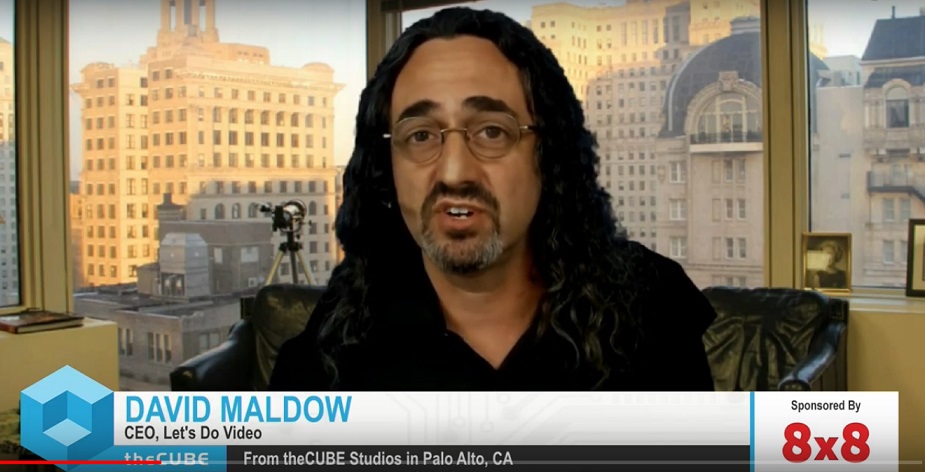 CLOUD
CLOUD
 CLOUD
CLOUD
 CLOUD
CLOUD
It may be hard to imagine now, but there was a time not so long ago that video conferencing required expensive, complicated equipment, a ton of bandwidth… and patience. Lots and lots of patience.
That’s because the video feed was often unreliable, it was difficult to join from multiple locations and the resulting experience was often plagued by dropped connections, fuzzy pictures or people who moved on the screen in what resembled jerky, stop-motion animation.
“We promised if they fixed all of that, people would start to use it, and now we’re seeing an absolute explosion in the market of people taking these apps into the workplace and actually using them,” said David Maldow (pictured), founder and chief executive officer of Let’s Do Video, a firm which covers the video collaboration and business team workflow space. “Now it’s available for everyone and it was just a matter of whether we’re ready for it. It appears that we are.”
Maldow spoke with Peter Burris (@plburris), host of theCUBE, SiliconANGLE Media’s mobile livestreaming studio, in Palo Alto, California. They discussed the impact of cloud technology on video collaboration tools and the use of conferencing apps to get work done (see the full interview with transcript here). (* Disclosure below.)
What changed the video conferencing experience in dramatic fashion was cloud computing. The cloud video market has grown from a niche technology to a mainstream commodity, with annual revenue in excess of $2.7 billion, and it has continued to expand.
Cloud-hosted video services have offered an easier and more secure solution which has brought new participants into the market.
“If I wanted to talk to a customer or partner before, I had to open a hole in my firewall and let someone else into my network and my information technology people would go crazy,” Maldow said. “Now, the call is hosted on a video conferencing company’s cloud. It’s safe.”
There is also the advantage of personal connection which video collaboration offers, instead of the phone call.
“We all know that when you have a face to face meeting, you get the work done,” Maldow noted. “One of the reasons that I named my company Let’s Do Video is that I’d be on the phone with a colleague, a partner, a teammate and I’d wonder if he or she was checking their email. We need to get work done, let’s do video.”
Watch the complete video interview below, and be sure to check out more of SiliconANGLE’s and theCUBE’s CUBE Conversations. (* Disclosure: 8×8 Inc. sponsored this segment of theCUBE. Neither 8×8 nor other sponsors have editorial control over content on theCUBE or SiliconANGLE.)
THANK YOU